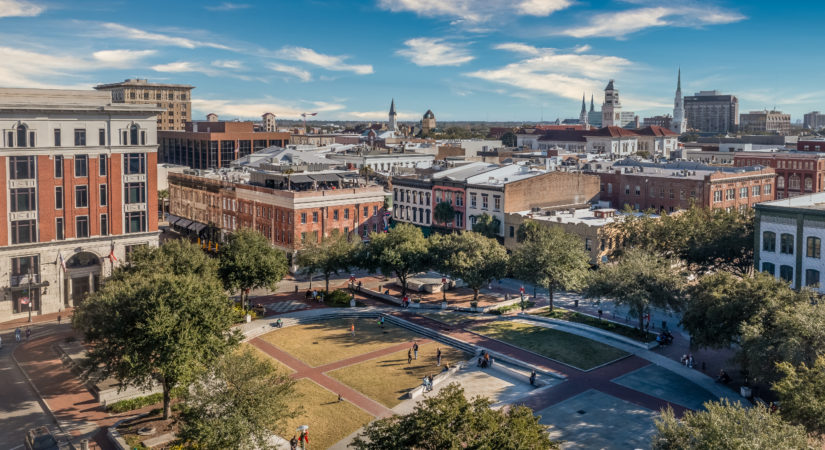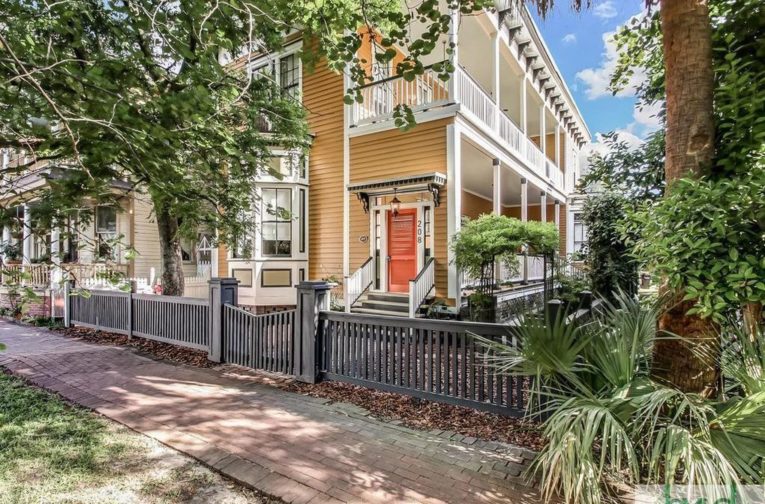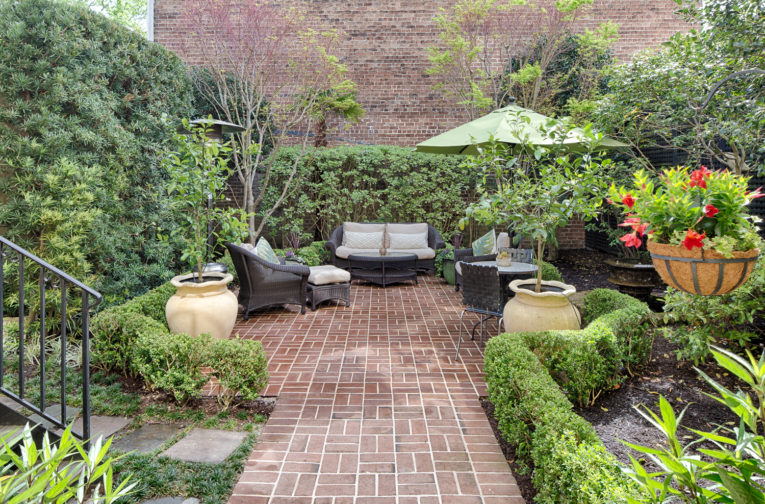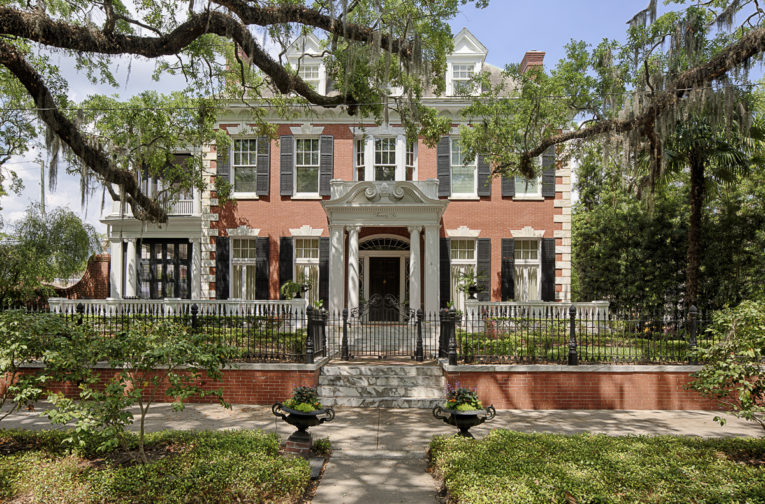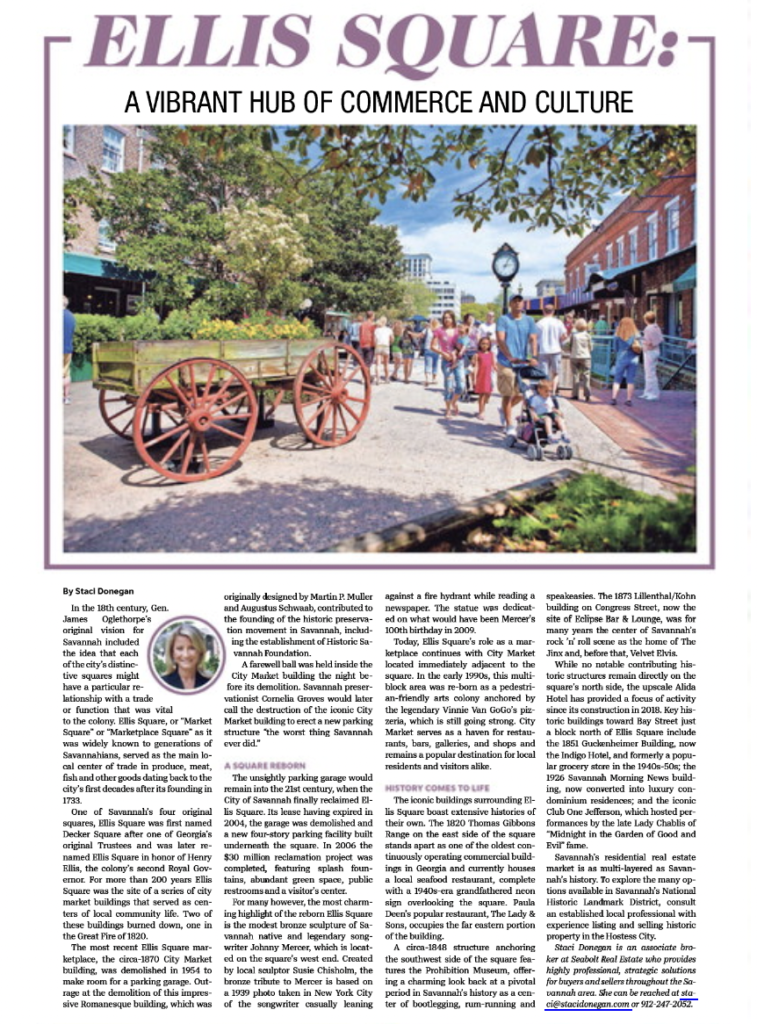
In the 18th century, Gen. James Oglethorpe’s original vision for Savannah included the idea that each of the city’s distinctive squares might have a particular relationship with a trade or function that was vital to the colony. Ellis Square, or “Market Square” or “Marketplace Square” as it was widely known to generations of Savannahians, served as the main local center of trade in produce, meat, fish and other goods dating back to the city’s first decades after its founding in 1733.
One of Savannah’s four original squares, Ellis Square was first named Decker Square after one of Georgia’s original Trustees and was later renamed Ellis Square in honor of Henry Ellis, the colony’s second Royal Governor. For more than 200 years, Ellis Square was the site of a series of city market buildings that served as centers of local community life. Two of these buildings burned down, one in the Great Fire of 1820.
The most recent Ellis Square marketplace, the circa-1870 City Market building, was demolished in 1954 to make room for a parking garage. Outrage at the demolition of this impressive Romanesque building, which was originally designed by Martin P. Muller and Augustus Schwaab, contributed to the founding of the historic preservation movement in Savannah, including the establishment of Historic Savannah Foundation.
A farewell ball was held inside the City Market building the night before its demolition. Savannah preservationist Cornelia Groves would later call the destruction of the iconic City Market building to erect a new parking structure “the worst thing Savannah ever did.”
A Square Reborn
The unsightly parking garage would remain into the 21st century, when the City of Savannah finally reclaimed Ellis Square. Its lease having expired in 2004, the garage was demolished and a new four-story parking facility was built underneath the square. In 2006, the $30 million reclamation project was completed, featuring splash fountains, abundant green space, public restrooms and a visitor’s center.
For many however, the most charming highlight of the reborn Ellis Square is the modest bronze sculpture of Savannah native and legendary songwriter Johnny Mercer, which is located on the square’s west end. Created by local sculptor Susie Chisholm, the bronze tribute to Mercer is based on a 1939 photo taken in New York City of the songwriter casually leaning against a fire hydrant while reading a newspaper. The statue was dedicated on what would have been Mercer’s 100th birthday in 2009.
Today, Ellis Square’s role as a marketplace continues with City Market located immediately adjacent to the square. In the early 1990s, this multi-block area was re-born as a pedestrian-friendly arts colony anchored by the legendary Vinnie Van GoGo’s pizzeria, which is still going strong. City Market serves as a haven for restaurants, bars, galleries, and shops and remains a popular destination for local residents and visitors alike.
History Comes to Life
The iconic buildings surrounding Ellis Square boast extensive histories of their own. The 1820 Thomas Gibbons Range on the east side of the square stands apart as one of the oldest continuously operating commercial buildings in Georgia and currently houses a local seafood restaurant, complete with a 1940s-era grandfathered neon sign overlooking the square. Paula Deen’s popular restaurant, The Lady & Sons, occupies the far eastern portion of the building.
A circa-1848 structure anchoring the southwest side of the square features the Prohibition Museum, offering a charming look back at a pivotal period in Savannah’s history as a center of bootlegging, rum-running and speakeasies. The 1873 Lillenthal/Kohn building on Congress Street, now the site of Eclipse Bar & Lounge, was for many years the center of Savannah’s rock ’n’ roll scene as the home of The Jinx and, before that, Velvet Elvis.
While no notable contributing historic structures remain directly on the square’s north side, the upscale Alida Hotel has provided a focus of activity since its construction in 2018. Key historic buildings toward Bay Street just a block north of Ellis Square include the 1851 Guckenheimer Building, now the Indigo Hotel, and formerly a popular grocery store in the 1940s-50s; the 1926 Savannah Morning News building, now converted into luxury condominium residences; and the iconic Club One Jefferson, which hosted performances by the late Lady Chablis of “Midnight in the Garden of Good and Evil” fame.
Savannah’s residential real estate market is as multi-layered as Savannah’s history. To explore the many options available in Savannah’s National Historic Landmark District, consult an established local professional with experience listing and selling historic property in the Hostess City.

